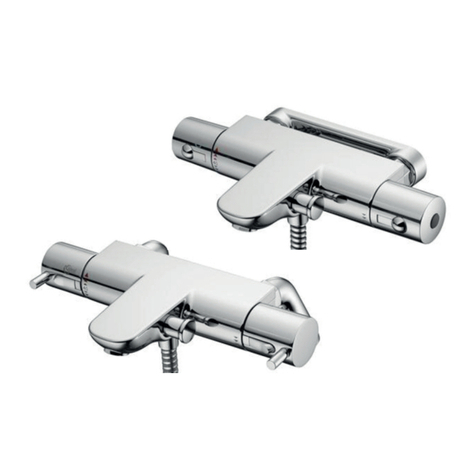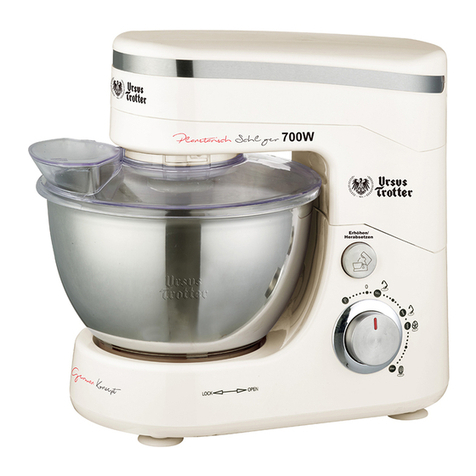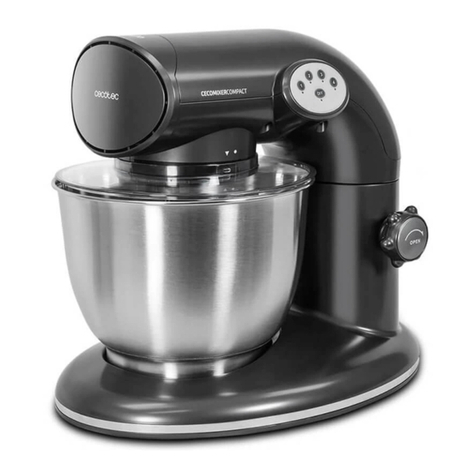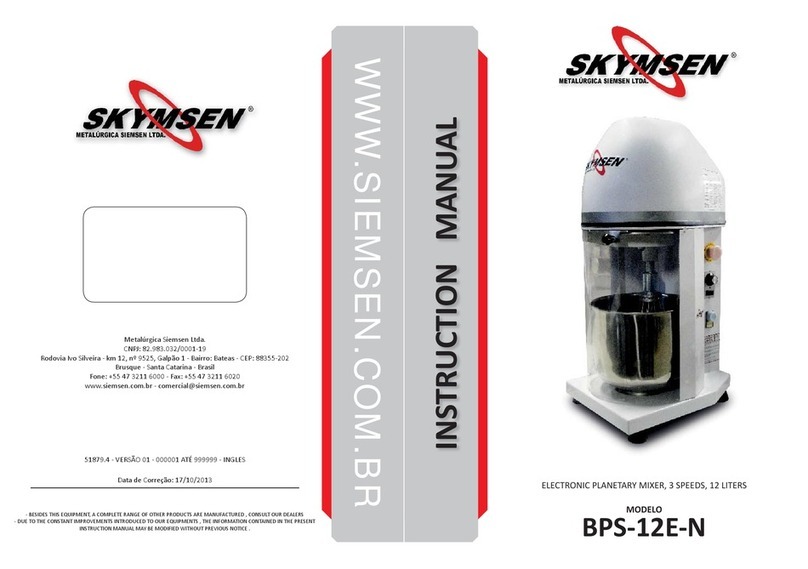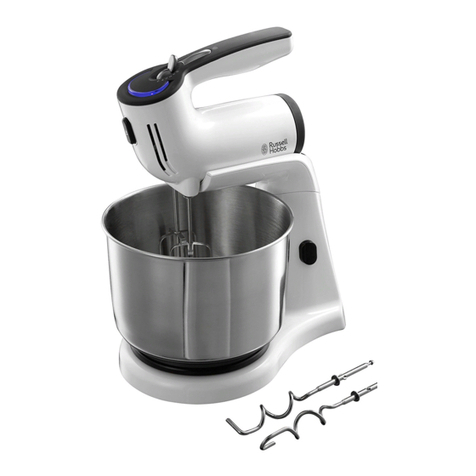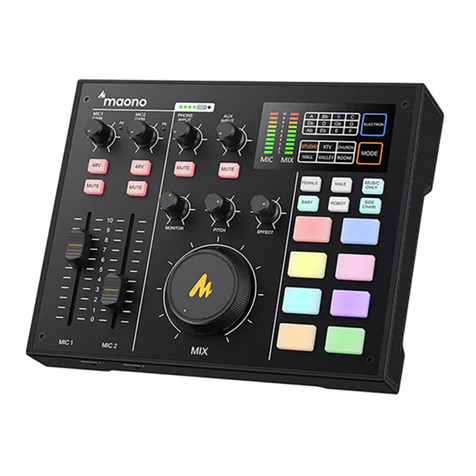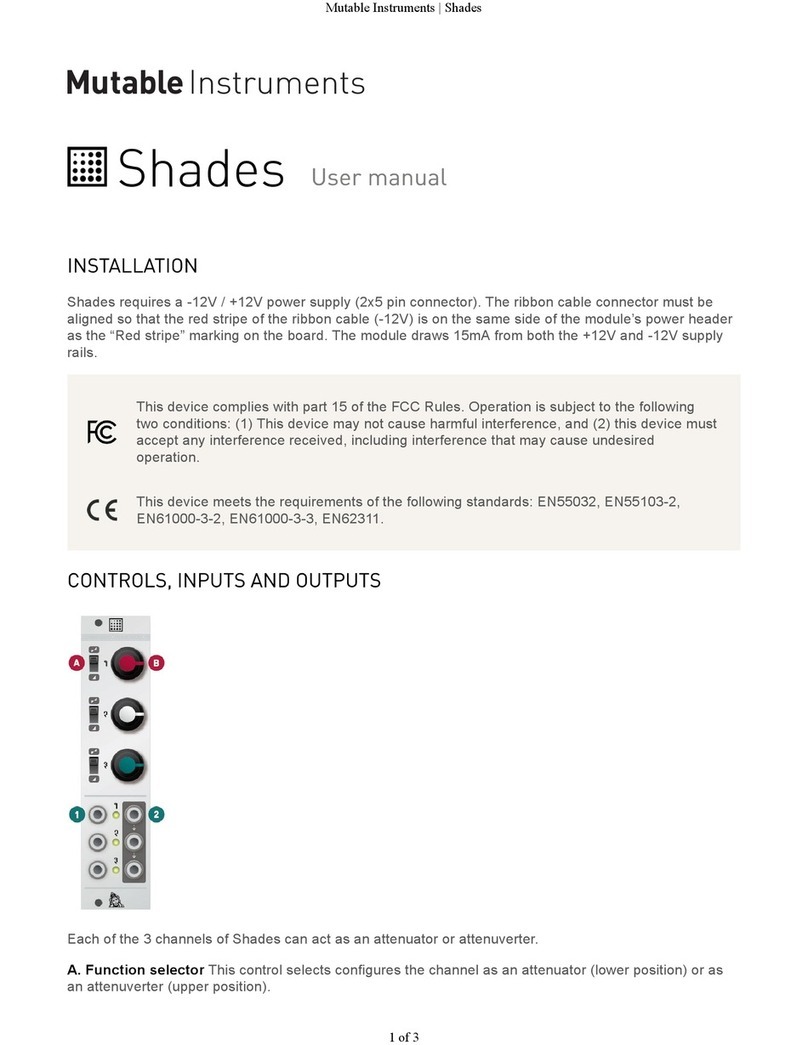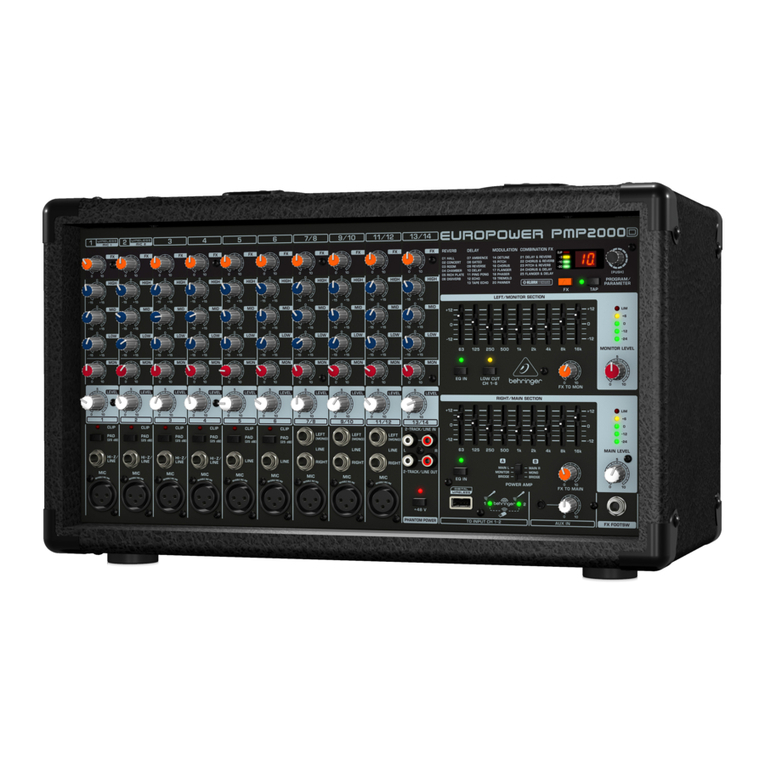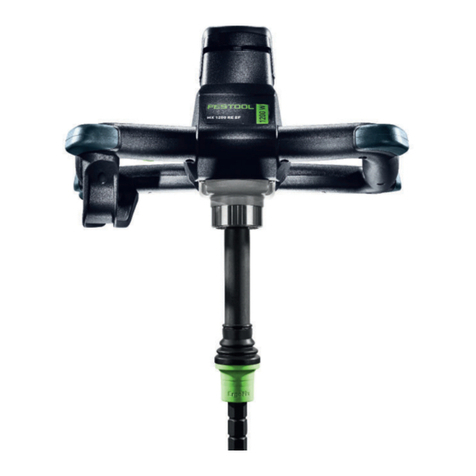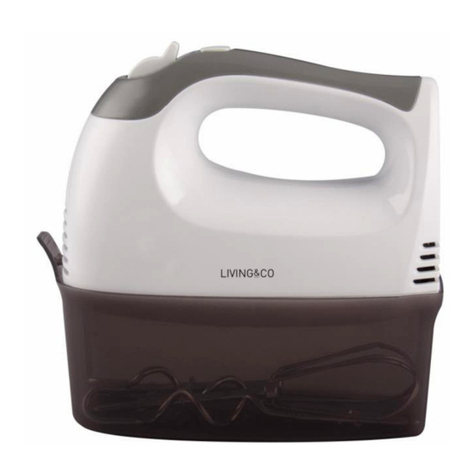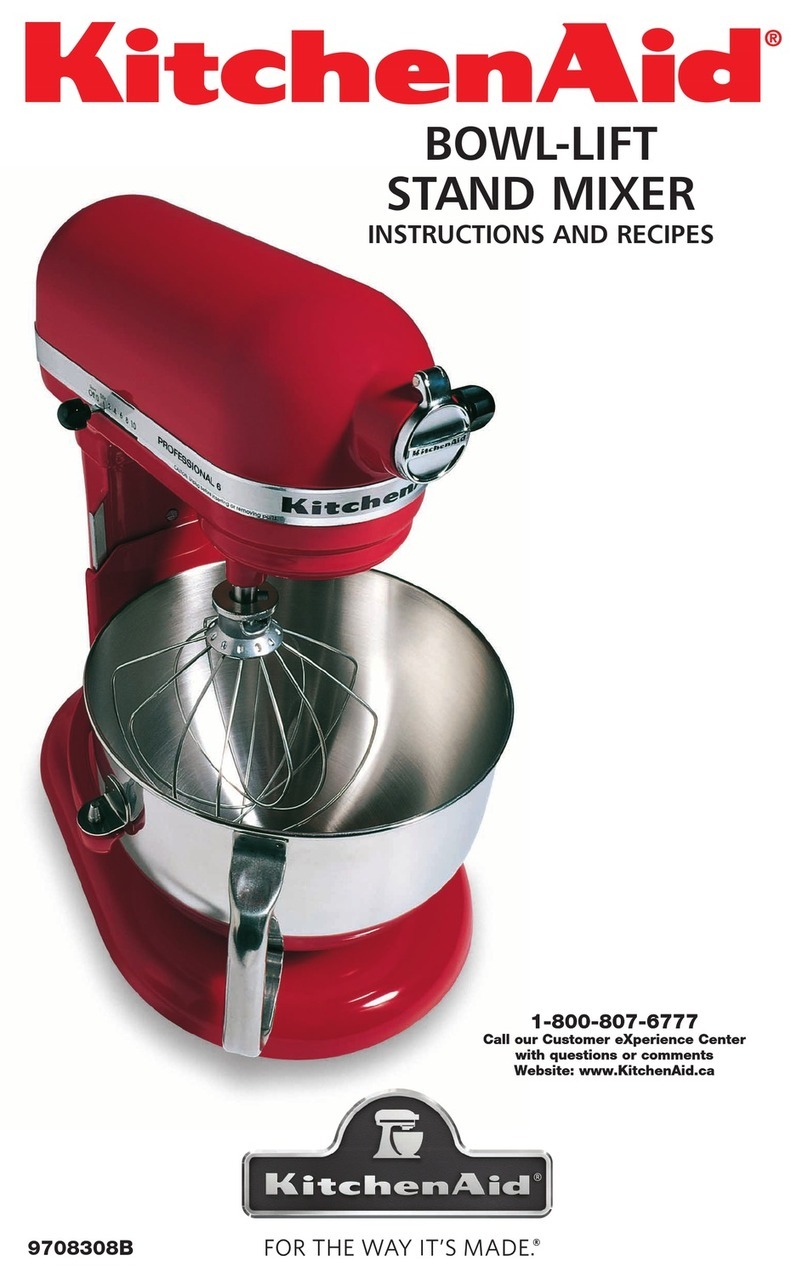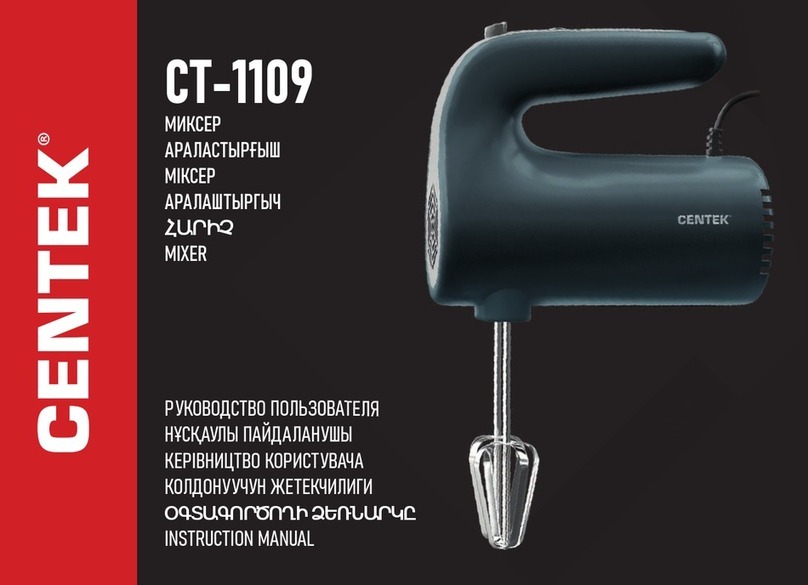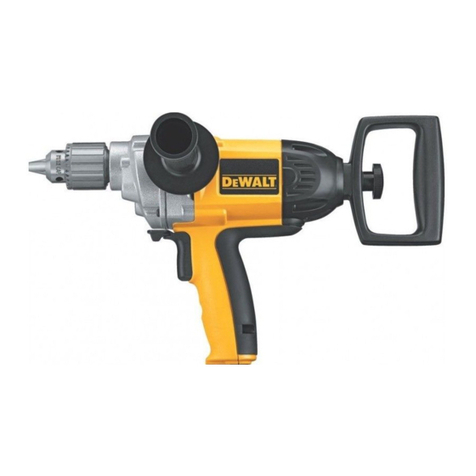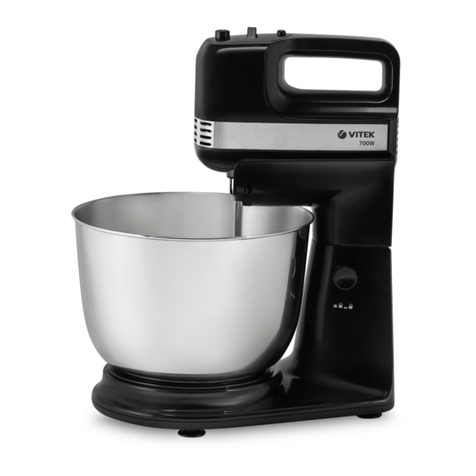Ideal-Standard ALTO ECOTHERM A4740AA User manual

ALTO ECOTHERM
A4740AA Shower valve with wall bracket
A4741AA Shower pack incl. three function kit and wall bracket
A5637AA Shower valve with lever handle and wall bracket
A6385AA Shower pack incl. three function kit with Cat 5 hose
retaining and wall bracket
IMPORTANT
BEFORE CONNECTION, FLUSH WATER
THROUGH PIPEWORK TO REMOVE ALL
DEBRIS ETC. WHICH COULD DAMAGE
THE VALVE MECHANISM
Installation Instructions
Thermostatic Bar Shower Valve
INSTALLER
After installation pass
to user for future reference

2
150
304
78
105
G1/2
32
40
G3/4
150
297
78
105
G1/2
32
40
G3/4
Dimensions (in millimetres) may vary within permitted tolerances
A4740AA
A4741AA
A6385AA
A5637AA
Fig.1
Fig.2

3
Table of Content
1 INTRODUCTION 4
2 SUPPLY CONDITIONS 5
3 WATER REGULATIONS 6
4 INSTALLATION GUIDE 7
5 OPERATION A4740AA, A4741 AA & A6385AA 10
5 OPERATION A5637AA 11
6 MAXIMUM TEMPERATURE STOP 12
7 THERMOSTATIC CARTRIDGE CALIBRATION 12
8 MAINTENANCE 12
9 COMMISSIONING & PERIODIC CHECKS 13
10 FREQUENCY OF REGULAR SERVICING 13
11 THERMOSTATIC CARTRIDGE REPLACEMENT 14
A4740AA, A4741AA, A6385AA
11 THERMOSTATIC CARTRIDGE REPLACEMENT 15
A5637AA
12 FLOW CARTRIDGE REPLACEMENT 16
13 COLD WATER ISOLATION (CWI) TEST 17
14 CHECK VALVES REPLACEMENT 17
15 CLEANING 18
16 ISOLATING VALVES 18
17 SPARE PARTS 19

4
1INTRODUCTION
The ttings covered by these instructions should be installed in accordance
with the Water Regulations published in 1999*.
Ideal Standard strongly recommends that these ttings are installed by
a professional tter.
*A guide to the Water Supply (Water Fittings) Regulations 1999 and the Water Byelaws 2000, Scotland is published
by WRAS (Water Regulations Advisory Scheme) Unit 13, Willow Road, Pen-y-Fan Industrial Estate, Crumlin, Gwent,
NP11 4EG. ISBN 0-9539708-0-9
These thermostatic shower mixers are designed to be installed on normal UK low pressure storage tank fed
systems, unvented high pressure systems, modulating instantaneous water heaters or modulating combina-
tion (combi) boilers. They are suitable for all pumped applications.
WATER REGULATIONS
Hot and cold water supply pressures must be reasonably balanced and from a common source - both from
storage or both from a supply pipe. (IRN 101). The mixers will function within specication on unequal pres-
sures up to a ratio of 5 : 1, but it is not recommended that the cold supply be connected to the rising main
and hot to the tank fed supply as the pressure differential is likely to exceed the 5:1 ratio. (See table 1) The
minimum pressure for correct operation is 0.1 bar (1m head). Pressure head is measured as the vertical
distance between the bottom of the cold water storage tank which feeds the hot water system and the high-
est point on the shower spray plate. When installing with a shower pump the use of a secondary tapping
from the cylinder is highly recommended.
Figure 1 shows the various methods of connecting the hot water pipe to the cylinder - the most preferred on
the left and the least preferred on the right.
The tting should be so installed as to be readily accessible for examination, repair, replacement or opera-
tion. (IRN 111).
The temperature of the hot water must not exceed 85ºC but the installer’s attention is drawn to code of
practice BS 6700 which recommends that stored hot water should normally never exceed 65ºC. For correct
operation of the valve, a minimum of 55ºC is required.
Note: If water supply is fed by gravity then supply pressures should be veried to ensure the conditions of
use are appropriate for the valve.
most preferred solution least preferred solution
Essex flange 22mm Surrey flange
22mm outlet
From vertical
expansion pipe
22mm pipework
Preferred arrangements for cylinder tapping
From underside of
expansion pipe off-set
at 60º 22mm pipework
Fig.1

5
2 SUPPLY CONDITIONS
BSEN1111 BSEN1287
Operating pressure range: High Pressure Low Pressure
Maximum static pressure 10 bar 10 bar
Flow pressure hot and cold 0.5 to 5.0 bar 0.1 to 1.0 bar
Hot supply temperature 55 to 65°C 55 to 65°C
Cold supply temperature 5 to 20°C 5 to 20°C
Temperature differential characteristic (TDC) 10 °C 10°C
Table 1 Conditions of use
Isolation valves MUST be tted to permit future maintenance. Fitting of strainers is also
recommended.
These should be tted as close as is practicable to the water supply inlets of the thermostatic
shower valve. See sect.16 for more details.
Both isolation valves & strainers should be installed in an easily accessible location.
MODULATING COMBI BOILER
This thermostatic shower valve is designed for use with modulating
combination boilers.
When installing on a modulating combination boiler it is sometimes possible
for the interaction of a thermostatic valve with the combi to cause the boiler
to cut out and cut in again. With the result that the water will become
alternatively cold and hot. To overcome this, a 4 L/min ow regulator
should be tted upstream of the thermostatic valve. It should be tted in any
15mm compression tting in the dedicated cold supply pipe.
It is important to choose a compression tting located in a position which is accessible after installation
and it must be tted the correct way round for the direction of ow. The regulator can be tted in either the
inlet or outlet side of the compression tting. If tting in an outlet side, ensure the o-ring is seated fully in
the visible rebate around the edge of the regulator. Use the tip of a small screwdriver or similar to achieve
this. Ensure the tail of the pipe is not fouling the regulator (shorten if required) and do up the compression
tting as normal. In a minority of cases, where the boiler is of a type which stores a small quantity of very hot
water, it may also be necessary to t a 4 l/min ow regulator in the hot supply. These can be obtained from
Customer Care (A962570NU).
flow direction
through
flow regulator
IMPORTANT: Ensure that any old / existing thermostatic mixing valves
(TMVs) that may be tted in the supply pipes are removed

CATEGORIES OF RISK
The water regulations published in 1999* take a new approach to backow in that they look at different
categories of risk. The installer must assess the risk from the various categories of uid in adjacent appli-
ances before determining the level of backow protection required for a particular installation. Figures 3 &
4 describe the protection required in various installations.
CATEGORY 3 RISK
Water in a shower tray, basin or bathtub is considered to be a uid category 3 risk which is a uid which
represents a slight health hazard if it were to nd it’s way back into the supply pipe. For this reason it must
not be possible for any exible shower head to be able to enter any adjacent washbasin, bath or shower
tray unless appropriate protection is employed. (See Figure 3). If it is desired to allow the hand spray to
be used inside say a bathtub or a basin it is essential that double check valves be tted to the inlet on both
6
3WATER REGULATIONS
zone of backflow
risk for longer
hose
spill
over
level
bath or shower tray
25mm minimum air gap
required if check valves are
not fitted
spill over
level
washbasin
zone of
backflow risk
for shorter
hose
no additional
backflow protection
required
cold and hot water supplies
to shower valve will need
additional check valves on each
service if longer hose is fitted
zone of backflow risk
for restrained hose
which is longer than
system design hose
- not permitted -
zone of backflow
risk for unrestrained
hose
zone of backflow risk
for restrained hose
w.c.
spill-over
level
shower tray
or bath tub
bidet
w.c.
spill-over
level
restrained hose giving
the 25 mm air gap is
permitted
25mm
minimum
unrestrained
hose would
not be
permitted
hot and cold supplies to the thermostatic
valve. Alternatively single check valves
can be tted at the inlets and an additional
check valve should be tted in the valve
outlet.
No check valves need be tted if the hand
spray is prevented from reaching closer
than 25mm of the spill over level of any
such xture.
CATEGORY 5 RISK
Water in a Sink, WC or Bidet is considered
to be a uid category 5 risk which is a uid
which represents a serious health hazard
if it were to nd it’s way back into the
supply pipe. For this reason it must not be
possible for any exible shower head to
be able to enter any adjacent Sink, WC or
Bidet. If the exible hose to be tted could
reach into any such vessel, the require-
ments to the system design are so one-
rous it is better not to t a exible. Rather,
a xed overhead showerhead should be
considered. (See Figure 4).
It will also be seen that this risk could
change should the hose be taken out of
the restraining device or should a longer
replacement hose be tted at a later date.
Installers and householders are advised to
take account of these factors when tting
replacement hoses.
For pumped applications the pipe supply-
ing the pump must not in addition supply
an ascending spray bidet.
Category 5 hose retaining instruction on
page 6. (See Figure 5)
Fig. 3 Backow risk from a uid category 3
Fig. 4 Backow risk from a uid category 5

+
a
b
The thermostatic mixing valve must be installed in such a position that maintenance of the TMV and its
valves and the commissioning and testing of the TMV can be undertaken.
Two 15mm inlet pipes need to be run at 150mm
centres which will have been identied as the loca-
tion of the shower tting and cut two holes of dia-
meter 25-30mm in the wall board. We recommend
leaving 50mm of pipe protruding at this stage.
Place wall plate over pipework and onto
the wall surface. A spirit level can be
placed on the ats of the wall plate to
ensure the level. Once at the correct
position the two xing holes can be
marked. Drill two holes to suit appropri-
ate wall xings.
7
4INSTALLATION GUIDE
2
IMPORTANT
BEFORE CONNECTION, FLUSH WATER
THROUGH PIPEWORK TO REMOVE ALL
DEBRIS ETC. WHICH COULD DAMAGE
THE VALVE MECHANISM
1
HOT water
supply pipe
50mm
150
COLD water
supply pipe
2
3Flats on mounting plate
Mark the locations
Fig. 5 SLIDING RAIL – CATEGORY 5 HOSE RETAINING
Note:
Fixing holes in
bracket are at 65mm
centres.

8
4
6
Note:
Tile closely to the
pipe to ensure gasket
effectiveness
Palce gasket on the rear of
wall mount plate
Tighten up the two screws until secure.
Note:
For plaster board duct it will be
necessary to t extra strong cavity
anchor plasterboarad xings as
shown.
The pipes should be trimmed level to
the wall bracket. If using a pipe cutter
it will be necessary to mark the pipes
and then remove the bracket before
trimming to its correct length.
Note:
If the wall is to be subsequently tiled
ensure there is sufcient movement
in the duct pipework to allow the
bracket to move forward by the thick-
ness of the tilling.
Cavity anchor
plasterboard
xing
5
Use suitable
wall xings
Tilling movement
allowance Pipe trimmed
level with the
wall bracket

9
7
Fit the olives to the pipes prior to
screwing the two 3/4“ connectors into
the wall mount plate using a 1/2“ allen
key.
The connectors will have to be securely
screwed in to form the necessary com-
pression joint between the olive, wall
plate and connector.
Shroud can now be tted to wall plate and should
be positioned with the slot at the bottom
Shower outlet
to underside
Ensure the sealing washers are within the captive nuts of the shower valve.
Fit the shower valve to the wall bracket as shown.
Turn on the water supplies & check for leaks.
Fit 15mm
Olives x2
10
Use 30mm A/F
spanner.
CAUTION:
Take care not to
damage chromed
surfaces.
NOTE FOR IRELAND: 15mm olives are
supplied with this product. Use ½” olives
if ½” supply pipes are tted.
For guidance on how to install the shower kit, please refer to the seperate
instructions provided with the kit.
8
9
1/2“

10
=40°C
>40°C
+
+
80
40
5OPERATION
A 4740 AA A4741 AA A 6385 AA
Right handle controls water ow rate.
• This handle is shown above parked in the off position.
• Rotating this handle downwards commences water ow. By rotating the handle 90° from
the off position the user will encounter economy ow “stop” delivering about 50% of the
maximum ow rate achievable through this product.
• To obtain greater ow rate, press the right button and rotate this handle further downwards.
The handle will rotate a further 90° from the economy stop to the maximum ow.
Left handle controls water temperature.
• This handle is shown above parked in the 40°C temperature “stop” position.
• At this temperature “stop” position mixed water is delivered up-to about 40°C.
• To obtain cooler water rotate handle downwards.
• To obtain higher water temperature, press the left button and then rotate this handle upwards.
DO NOT FORCE HANDLES BEYOND THE DESCRIBED MOVEMENT RANGES
OTHERWISE THIS MAY RESULT IN DAMAGE TO BOTH VALVES AND HANDLES.
ATTENTION:
TEMPERATURES HIGHER 40°C CAN BE HARMFUL TO YOUR HEALTH.
Shower valve handle controls

11
=40°C
>40°C
+
+
80
40
A 5637 AA
5OPERATION
Right handle controls water ow rate.
• This handle is shown above parked in the off position.
• Rotating this handle downwards commences water ow. By rotating the handle 90° from
the off position the user will encounter economy ow “stop” delivering about 50% of the
maximum ow rate achievable through this product.
• To obtain greater ow rate, press the right button and rotate this handle further downwards.
The handle will rotate a further 90° from the economy stop to the maximum ow.
Left handle controls water temperature.
• This handle is shown above parked in the 40°C temperature “stop” position.
• At this temperature “stop” position mixed water is delivered up-to about 40°C.
• To obtain cooler water rotate handle downwards.
• To obtain higher water temperature, press the left button and then rotate this handle upwards.
ATTENTION:
TEMPERATURES HIGHER 40°C CAN BE HARMFUL TO YOUR HEALTH.
DO NOT FORCE HANDLES BEYOND THE DESCRIBED MOVEMENT RANGES
OTHERWISE THIS MAY RESULT IN DAMAGE TO BOTH VALVES AND HANDLES.
Shower valve handle controls

12
6MAXIMUM TEMPERATURE STOP
7CALIBRATION
8MAINTENANCE
°C max
40˚C
104°F
43˚C
109°F
45˚C
113°F
= 50˚C
118°F
c
d
b
e
a
f
The maximum mixed water temperature is factory
set at 40°C.
To change this temperature, remove the tempera-
ture control handle. see sect.11
Remove the temperature limit stop (black H-
shaped plastic part) and reinsert it in the appropi-
ate recess on the handle carrier.
Four different settings are possible:
40°C, 43°C, 45°C & 50°C
At last ret the temperature handle again.
In the event of the thermostatic cartridge requir-
ing re-calibration the following procedure should
undertaken.
1. Remove the temperature control handle.
see sect.11
2. Slide out the red “U” piece (b) exposing tem-
perature control mechanism (d).
3. Turn on the shower, position a thermometer in
the running water and when the temperature set-
tles, rotate the temperature control mechanism un-
til 40ºC is achieved.
4. Reconnect the handle carrier (e) ensuring the
arrow guide (c) is at 12 o’clock and ret the
red “U” piece (b).
5. Reconnect the Handle.
The tting of isolation valves and strainers is required as close as is practicable to the water supply inlets of
the thermostatic mixing valve. The thermostatic cartridge seldom fails and the possibility of blocked lters
should be investigated before contemplating replacing it. Small particles of debris may still nd their way
past the strainers and onto the lter screens on the thermostatic cartridge. These should be cleaned and
re-tted. See section on cartridge replacement.
IMPORTANT NOTE: Settings of 45°C & 50°C are not recommended for showering.
See section 9 for safe & comfortable bathing temperatures.

13
9COMMISSIONING & PERIODIC CHECKS
10 FREQUENCY OF REGULAR SERVICING
The purpose of servicing regularly is to monitor the performance of changes in system and valve set up. This
may require the need to adjust either the supply system or the valve. The product should be checked and
tested 12 months after commissioning.
Firstly measure the water temperature at the shower outlet.
Carry out the cold water supply isolation test by isolating the cold water supply to the TMV, wait for 5 seconds
if water is still owing check that the temperature is below 46C. If there is no signicant change to the set
outlet temperature (+/-2ºC or less change from the original settings) and the fail-safe shut off is functioning,
then the valve is working correctly and no further service work is required.
Notes:
A residual ow is permitted during the commissioning or the annual verication (cold water supply isolation
test), then this is acceptable providing the water temperature is no more than 2ºC above the designated
outlet temperature.
Temperature readings should be taken at the normal ow rate after allowing for the system to stabilize.
The sensing part of the thermometer probe must be fully submerged in the water that is to be tested.
Any TMV that has been adjusted or serviced must be re-commissioned and retested in accordance with the
instructions detailed above.
The following procedures should be carried out after installation and every 12 months after to ensure
that the valve is functioning correctly.
Check that:
1. The application of the thermostatic valve matches the approved designation.
2. The supply pressures are within the recommended range for the application.
3. The supply temperatures are within the permitted range for the application and comply with the guid-
ance for prevention of Legionella.
4. The mixed temperature is as required for the application.
Record:
5. Each hot and cold supply. (Make a note of the measuring device used).
6. The mixed water temperature at the outlet device.
Isolate:
7. The cold supply to the mixing valve and record the mixed water temperature after about 5 seconds.
The temperature should not exceed the value given in table (2) below.
Note: 46°C is the maximum mixed water temperature from a bath tap. The maximum temperature
takes account of the allowable temperature tolerances inherent thermostatic mixing valves and tem-
perature loss in metal baths. It is not a safe bathing temperature for adults and children.
The British Burns Association recommends 37°C-37.5°C as a comfortable bathing temperature for Chil-
dren.
In premises covered by the Care Standards Act 2000, the maximum mixed water temperature is 43°C
Table 2 A guide to maximum temperature sets
Application Mixed water temperature Permitted maximum temperature
rise during site testing
Shower 41°C 43°C

1
2
3
+
24
4
5
14
11 THERMOSTATIC CARTRIDGE REPLACEMENT
This thermostatic cartridge is protected from
water borne debris by mesh lter screens.
These should be checked and cleaned before
contemplating replacing the cartridge.
To replace the thermostatic cartridge:
(REMEMBER TO TURN OFF WATER
SUPPLIES)
1. Prise out the index button.
2. Remove handle screw.
3. Pull off the temperature control handle.
4. To remove the temperature handle carrier (grey
plastic moulding), slide the black serrated lever
clockwise and pull off. This will expose the
thermostatic cartridge.
5. Unscrew cartridge with 24mm A/F spanner and
replace if necessary.
ENSURE PARTS ARE REASSEMBLED IN THE CORRECT
SEQUENCE.
To clean the screens remove the o-rings shown
The screens will then slide off. When clean replace the screens then the
o-rings which should be lightly greased with a WRAS approved silicone
grease (e.g. Klueber Unisilikon GBU2).
lter screens
o-rings
lubricate
before
retting
A 4740 AA, A4741 AA & A 6385 AA

+
24
4
5
2,5
1
2
3
15
11 THERMOSTATIC CARTRIDGE REPLACEMENT
This thermostatic cartridge is protected from
water borne debris by mesh lter screens.
These should be checked and cleaned before
contemplating replacing the cartridge.
To replace the thermostatic cartridge:
(REMEMBER TO TURN OFF WATER
SUPPLIES)
1. Unscrew dog point
screw and pull off
temperature
control handle.
2. Remove handle
insert screw.
3. Pull off the
handle insert.
4. To remove the temperature handle carrier (grey
plastic moulding), slide the black serrated lever
clockwise and pull off. This will expose the
thermostatic cartridge.
5. Unscrew cartridge with 24mm A/F spanner and
replace if necessary.
ENSURE PARTS ARE REASSEMBLED IN THE CORRECT
SEQUENCE.
To clean the screens remove the o-rings shown
The screens will then slide off. When clean replace the screens then the
o-rings which should be lightly greased with a WRAS approved silicone
grease (e.g. Klueber Unisilikon GBU2).
lter screens
o-rings
lubricate
before
retting
A 5637 AA

1
2
3
4
5
1
2
3
4
5
2,5
16
12 FLOW CARTRIDGE REPLACEMENT
A 4740 AA, A 4741 AA & A 6385 AA
A 5637 AA
To replace the ow control cartridge:
(REMEMBER TO TURN OFF WATER SUPPLIES)
1. Prise out the index button.
2. Remove handle screw.
3. Pull off the ow control handle.
4. Pull of handle carriers.
5. Unscrew cartridge with 17mm
A/F spanner and replace if
necessary.
1. Unscrew dog point screw and
pull off ow control handle.
2. Remove handle insert screw.
3. Pull off the handle insert.
4. Pull of handle carriers.
5. Unscrew cartridge with 17mm
A/F spanner and replace if
necessary.
ENSURE PARTS ARE
REASSEMBLED IN THE
CORRECT SEQUENCE.
ENSURE PARTS ARE
REASSEMBLED IN THE
CORRECT SEQUENCE.

17
14 CHECK VALVES REPLACEMENT
To replace the check valves cartridges:
(REMEMBER TO TURN OFF WATER
SUPPLIES)
1. Seperate the shower valve from the wall
bracket by undoing the captive nuts. See
sect.4 step 9. Use 30mm A/F spanner.
2. Remove shower valve from wall, and keep
sealing washers safe.
3. The check valves are housed inside the
retaining inserts within the inlet bores.
Looking closely at the rear of the product,
note circlips hold the check valves in place.
Using circlip pliers, squeeze the circlip & lift it
away from the bore.
4. Gently pull out the check valves:
check & clean or replace if necessary.
Observe the ow direction arrow on the body
of the check valve. Ret the circlips.
ENSURE PARTS ARE
REASSEMBLED IN THE
CORRECT SEQUENCE.
12
3
4
13 COLD WATER ISOLATION (CWI) TEST
CWI test is a guide to showing the performance of the thermostat.
Prior to CWI test:
• Make sure that the Black H Clip is positioned in the 40°C slot on the temperature adjustment carrier
(see section 6) Remove temperature handle to check. If this has been removed then the fail-safe will
not work.
• Make sure the supply temperatures are within the ranges 55 to 65°C for hot, & 5 to 20°C for cold.
To perform a CWI test:
• Turn the product on using the ow handle, override the 50% economy ow stop on the handle & rotate
handle to max, giving 100% ow.
• The temperature handle button should be positioned at the front (parked at the 40°C nominal stop).
1. Record the steady state temperature of both hot and cold water supplies. Note the Δt.
2. Record the temperature of the mixed water at the outlet (preferably unscrew the shower hand set)
should be within range 40±1°C.
3. Isolate the cold water supply
If the ow ceases, CWI test passed. An ongoing reduced ne ow of water (pencil stream) from the
mixed water outlet is also acceptable as a pass.
Restore the cold supply & recheck the temperature at the mixed water outlet once stabilised.
If the ow has not reduced, the product has failed the CWI test. Product requires maintenance, cartridge
should be removed, cleaned & retested.
Additionally, clean all lters, ensure check valves are working, and make sure all isolating valves are
fully open.

18
16 ISOLATING VALVES
check valve
strainer cap
strainer screen
isolating valve
direction
of flow
flow regulator
Isolation valves (not supplied with this product) MUST be tted to permit future
maintenance. Fitting of strainers (lters) is also recommended.
These should be tted as close as is practicable to the water supply inlets of
the thermostatic shower valve.
Both isolation valves & strainers should be installed in an easily accessible
location.
An in-line combined isolating valve (shown below) can be purchased by
contacting Customer Care. Spares code E960613NU contains a pair of these
valves. This valve also contains a ow regulator and check valve (which can be
removed if not required).
15 CLEANING
When cleaning the shower valve always use soap based cleaners. never use
abrasive or scouring powders and never use cleaners containing alcohol, am-
monia, nitric acid, phosphoric acid, organic solvents or disinfectants.

19
17 SPARE PARTS
A 4740 AA, A4741AA & A 6385 AA
26 27
28
29
30
3
4
7
5
1
1
2
6
8
23
24
25
15
21
10
11
20
22
12
13
14
15
16
18
19
17
9
3
4
7
5
1
3
2
6
8
10
11
23
24
25
15
21
20
22
12
13
14
15
16
18
19
17
9
A 5637 AA
1 A 962 361 LJ
3 A 861 006 AA
4 A 962 998 NU
5 A 861 005 AA
6 A 963 427 NU
7 F 961 044 NU
8 A 962 230 NU
10 A 963 432 NU
11 A 963 400 NU
1 A 963 099 AA
4 A 962 998 NU
5 A 960 801 AA
6 A 963 427 NU
7 F 961 044 NU
8 A 962 230 NU
Fig.5
Fig.6
10 A 861 312 NU
11 A 861 245 NU
11 A 963 400 NU
14 A 962 605 NU
15 A 961 810 NU
17 N 042 977 NU
19 A 962 595 NU
21 B 960 722 AA
24 B 960 721 NU
14 A 962 605 NU
15 A 961 810 NU
17 N 042 977 NU
19 A 962 595 NU
21 B 960 722 AA
24 B 960 721 NU
26 B 9420 AA
27 B 9401 AA
28 B 960 944 AA
29 B 960 917 NU

Ideal Standard International NV
Corporate Village - Gent Building
Da Vincilaan 2
1935 Zaventem
Belgium
www.idealstandardinternational.com
0718 / A 866 497 40
Made in Germany
CUSTOMER CARE HELP LINE
0870 129 6085
CUSTOMER CARE FAX
01482 499611
E-MAIL
Ideal Standard pursues a policy of continuing im-
provment in design and performance of its products.
This right is therefore reserved to vary specication
without notice.
Ideal Standard is adivision of
Ideal Standard (UK) Ltd
Ideal Standard,
The Bathroom Works, National Avenue
Kingston-upon-Hull, HU 4HS, England
This manual suits for next models
3
Table of contents
Other Ideal-Standard Mixer manuals
